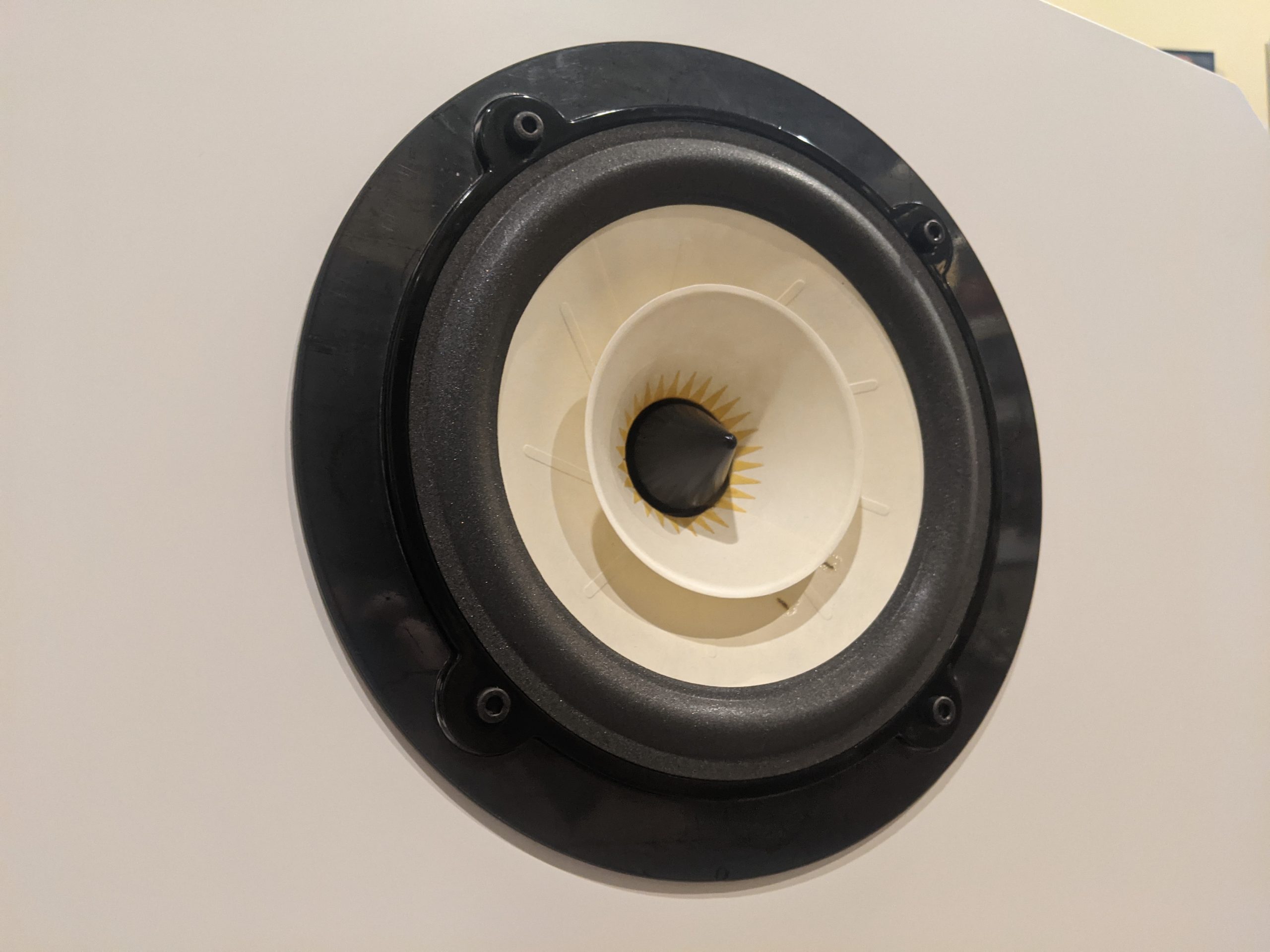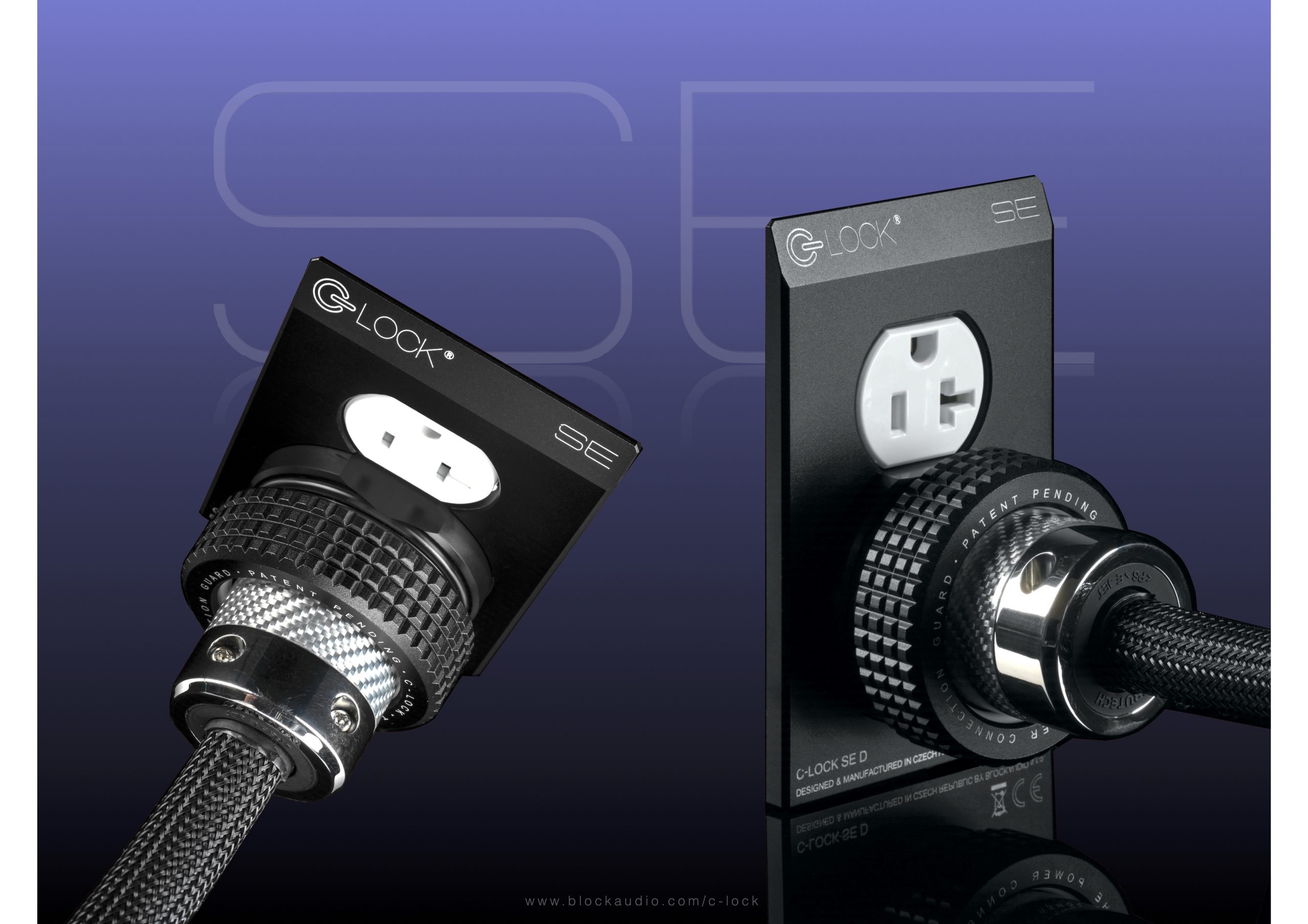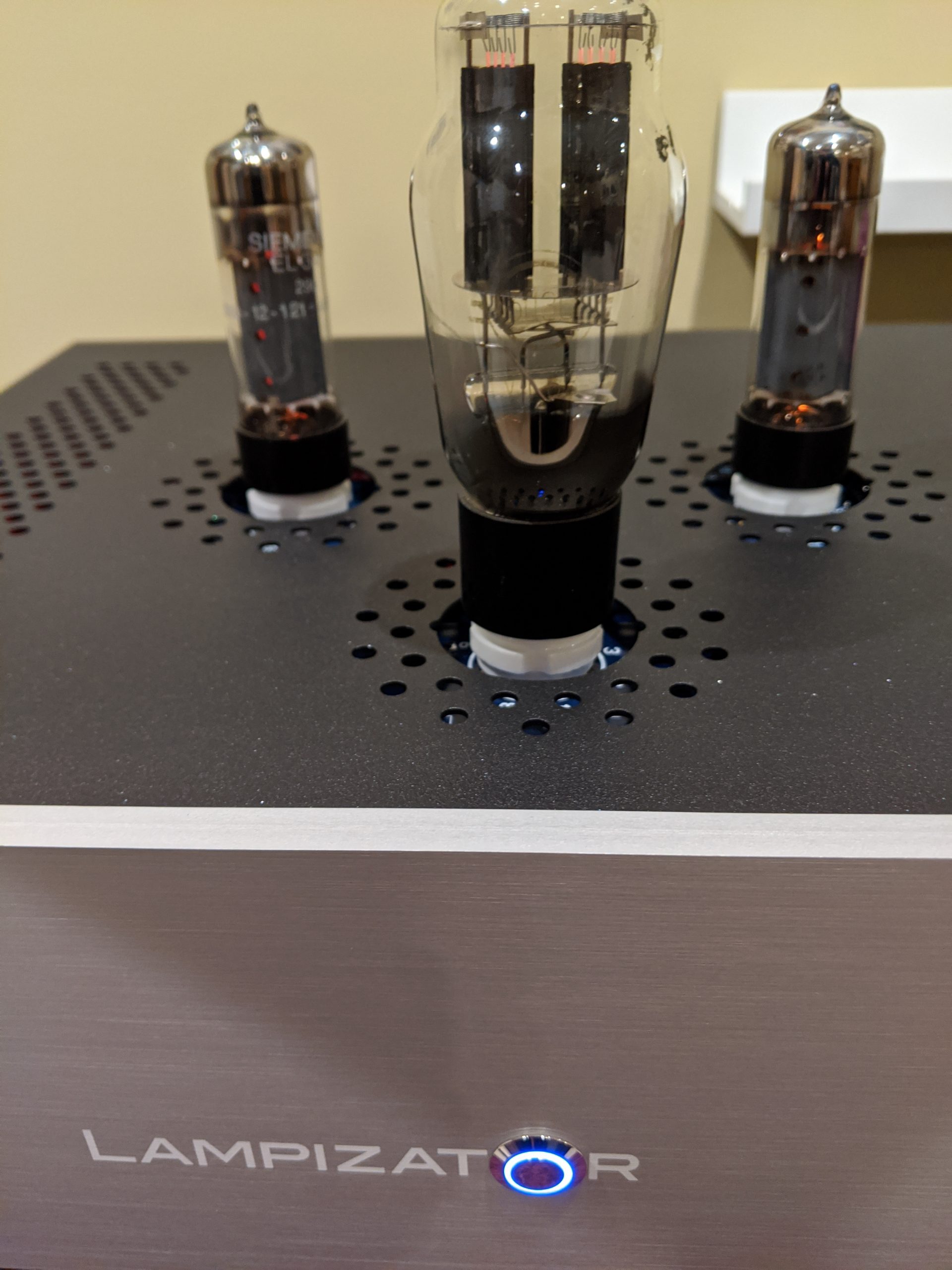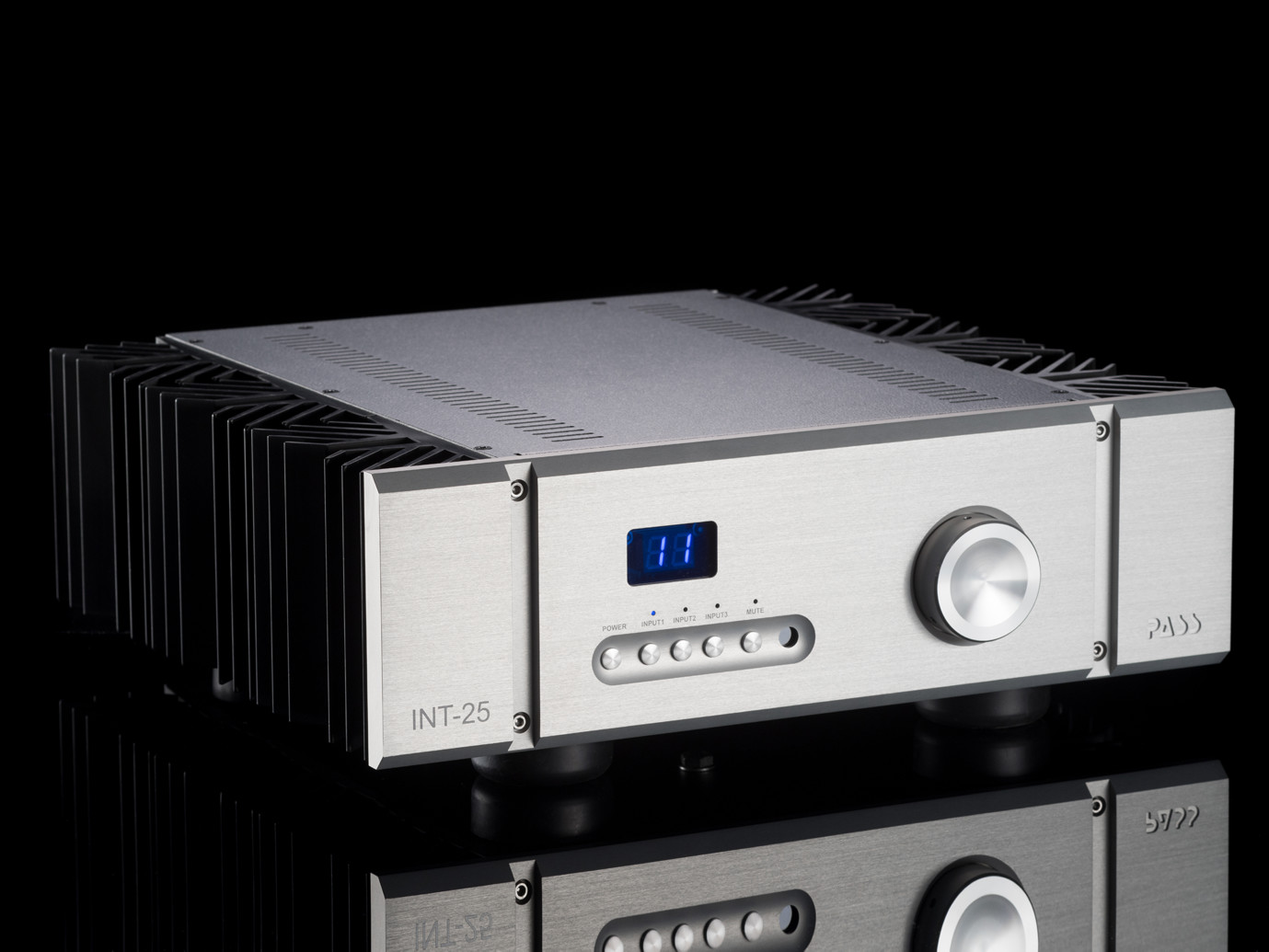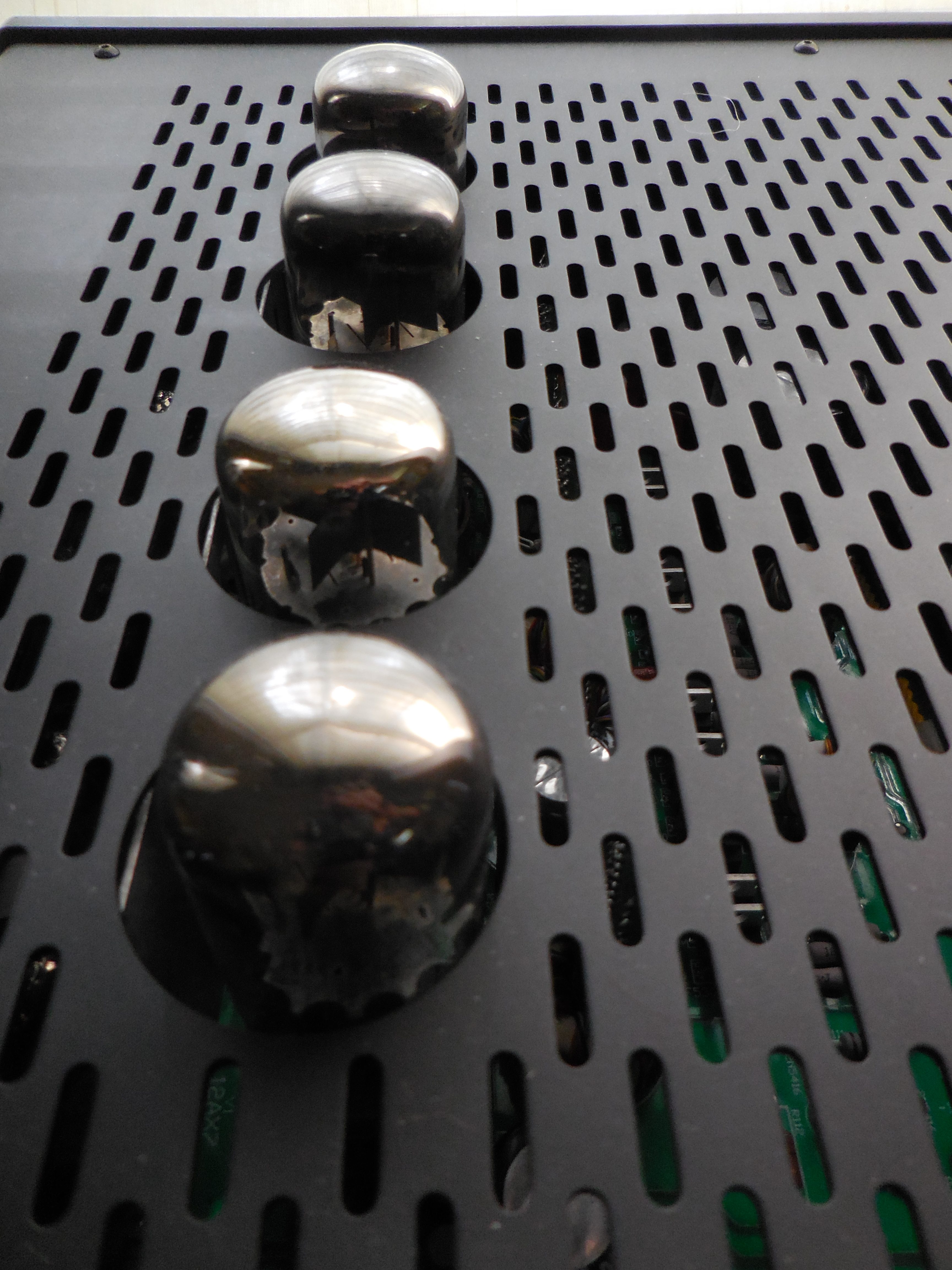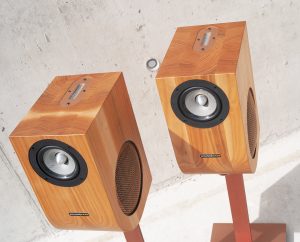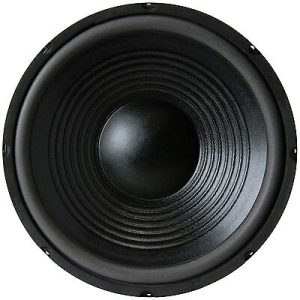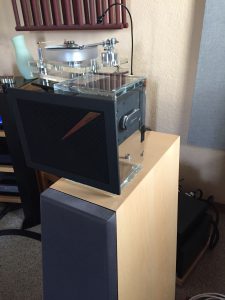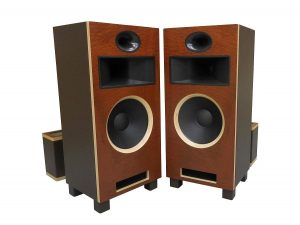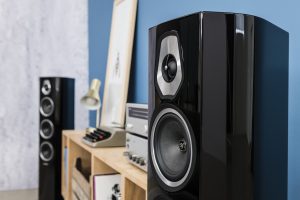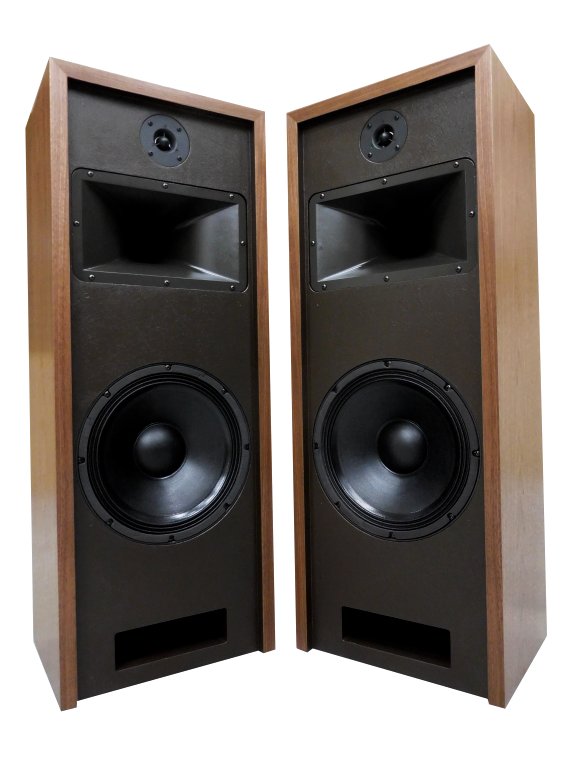
In 2018, Volti Audio's Greg Roberts offered me the opportunity to review his wonderful Rival Loudspeakers (HERE) I'd never heard a horn speaker in my home, and the Rival was somewhat of a dynamic revelation. Like the Rival, the new Volti Audio Razz is also a hybrid horn / bass reflex loudspeaker, designed by Mr. Roberts to be a true Volti Audio speaker at a price point that would allow more people to be able to afford it.
Volti Razz Details and Specifications (courtesy of Volti Audio)
- 12" high-power and high-sensitivity woofer – bass reflex configuration, ported
- Large midrange horn with a 2" throat and a shallow wide-dispersion design
- High quality 2" outlet midrange compression driver with a composite diaphragm
- High quality neodymium horn tweeter
- Custom made crossovers featuring high quality components, all hand-wired
- Bi-wire at the input terminals
- Sensitivity: 97dB
- Recommended amplifier power: 8wpc (min.), 80wpc continuous (max.)
- Bandwidth: 35Hz – 20kHz
- Nominal Impedance: 6ohm (connect to 8ohm taps)
- Dimensions: 40" tall, 15" wide and 12" deep
- Weight: 90 lbs. each
Volti Audio's Razz Comes to Town
The review pair of Razz arrived nicely boxed, clothed in one of the four standard veneer choices; a dazzling mahogany. The finely finished cabinet work is undeniably beautiful, and calls attention to Mr. Roberts skill as a woodworker. The grill cloth "mounting plates" are made of wood that has been CNC cut, sanded, primed, and painted with a satin lacquer black paint. Hidden magnets hold the grills so tightly, it takes a good tug to pull them off. I noted an improvement in sound without the grills, so I removed them soon after receiving the Razz. Speaker terminals are high quality 5-way binding posts. Bi-wire jumpers are furnished installed with the Razz.
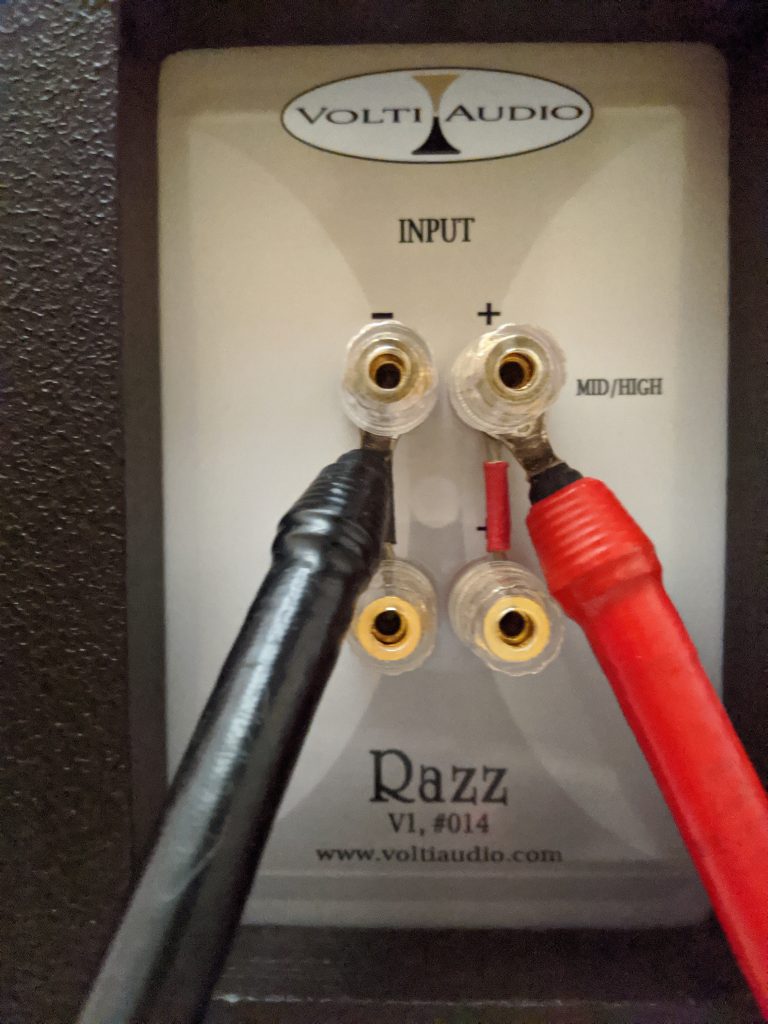
Of course there is much more to a high-end loudspeaker than a pretty face. It takes a lot of work to get a new design from concept to listening room, so I asked Greg Roberts to comment on his design process. Excerpts of his response follow:
"The sound of the Volti Audio Razz speaker comes from a delicate balance...listening to endless combinations of cabinet sizes, woofers, mid / tweeter drivers / horns, damping material placement, port tuning, bracing, and crossover filters over and over and over and over...It's not glamorous work I can assure you. It's tedious—endlessly frustrating—but ultimately rewarding. I love voicing a new speaker and I hate voicing a new speaker. It's exciting to create a new product and it's never perfect. It never will be perfect. But I want it to be perfect. If I just keep working on this filter design maybe I can get that perfect sound that's floating around in my head."
A three-way, horn / bass-reflex loudspeaker, Razz is solidly constructed of 1" Baltic Birch plywood, real wood veneers, and finished with hand-rubbed lacquer. At 40" tall, with a compact 15" x 12" footprint, the size of this relatively small floorstander belies it's dense 90 pound backbreaker-weight. The tuned bass reflex port is rectangular, vented in front below the 12" woofer. Razz is set up for bi-wiring, but without appropriate cables on hand, I kept the factory jumpers in place and used my Stealth single wire speaker cables for the duration of the review. Past experience with the Volti Rival suggests bi-wiring could provide a performance gain.
Working the Room
I set the Razz in various locations to understand how they performed in my room. They always sounded good, but the bass was a bit heavy handed at first. Razz comes standard with heavy felt pads on the bottom of each corner, but adding 1-½" spacers underneath provided a better balance of bass in my room. It should be noted that Razz has a solid wood bottom, allowing any type of spacer, footer, or spike to be installed.
Even though it was obvious Razz could be happy in a number of locations, I eventually settled on a simple golden triangle. The dimensions of my listening room are 16' long by 12' wide, with speakers on the long wall. I placed the speakers 8'6" apart, the exact same distance from my listening seat. In this position, the rear of the speakers were approximately 2' from the front wall, and 3' from the sidewall. Ultimately it was the toe-in angle that really made Razz sing. I ended up with them crossing in front of my nose. At this angle, imaging snapped into focus, and staging became more realistic.
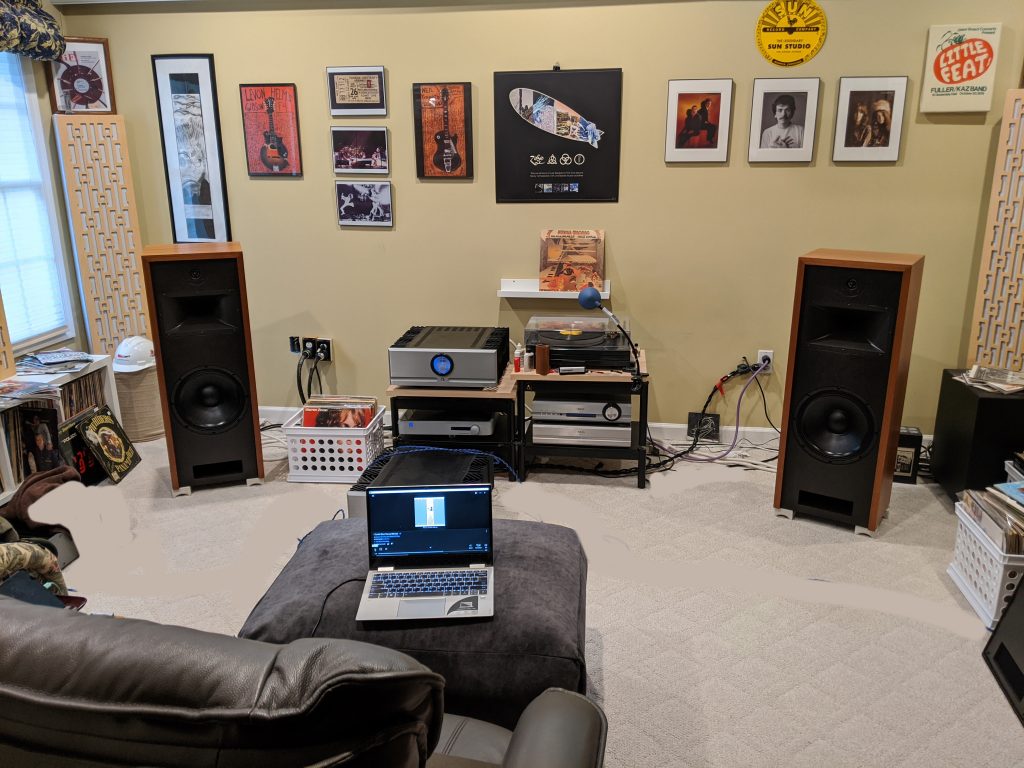
In my experience, the Razz should be a perfect choice for modest sized listening spaces. While I ended up with them spaced well away from walls, they sounded great in the nearfield, and the corners too. They are highly flexible, and not fussy, but taking the time to adjust them is key for the best sound.
Daily Driver
Unfortunately, I did not have a tube amp on hand to try with the Razz, but I did have a cadre of excellent solid state amplifiers. I started my amp exploration with the lowest wattage amplifier I had on hand; Nelson Pass' kitchen table masterpiece, the First Watt F7. Greg Roberts does a lot of listening with Gary Dews' fine BorderPatrol Audio Electronics, but when he visited the Tune Saloon to set up the Rival, he expressed how much he enjoyed listening to the F7 (as did I). And as expected, the F7's 20 class A watts (@ 8 ohms) also sounded terrific on the easy-to-drive Razz. I could happily live with this partnership forever. Seriously.
The F7 was slightly more transparent, immediate, and open than my reference Pass Labs XA 30.8. On the other hand, the XA 30.8 showed more guts, better bass control, more dynamic contrast, and higher ultimate volume. The Pass Labs INT-60 offered another take entirely. Razz is certainly not hard to drive, but in my system, the speakers seemed to relish the additional wattage, and responded well to the INT-60s class A/B power envelope. The INT-60 was slightly leaner, but added an additional measure of speed, and terrific dynamics. AC/DC's "Rock and Roll Ain't Noise Pollution" was head banging heaven!
Generally Razzed
The Razz needed a few days of play to open up, and even then I needed some time listening to them to really appreciate what they could do. From the first play, the speakers conveyed a nice sense of scale and good dynamic realism when turned up fairly loud. But it took a couple weeks before they developed their highest level of clarity, micro-dynamics, and low volume performance.
Volti Audio states the Razz has a nine octave range. After living with them, I would not argue that claim; they were nearly full-range in my room. Top end was very good; airy, and detailed, with a crystalline pop of neutrality. Bass was invitingly musical: deep, textured, clearly delineated on most recordings, and when called upon, potently slamming. In fact, the 12" woofer worked so well I never used nor missed, my REL Strata III subwoofer.
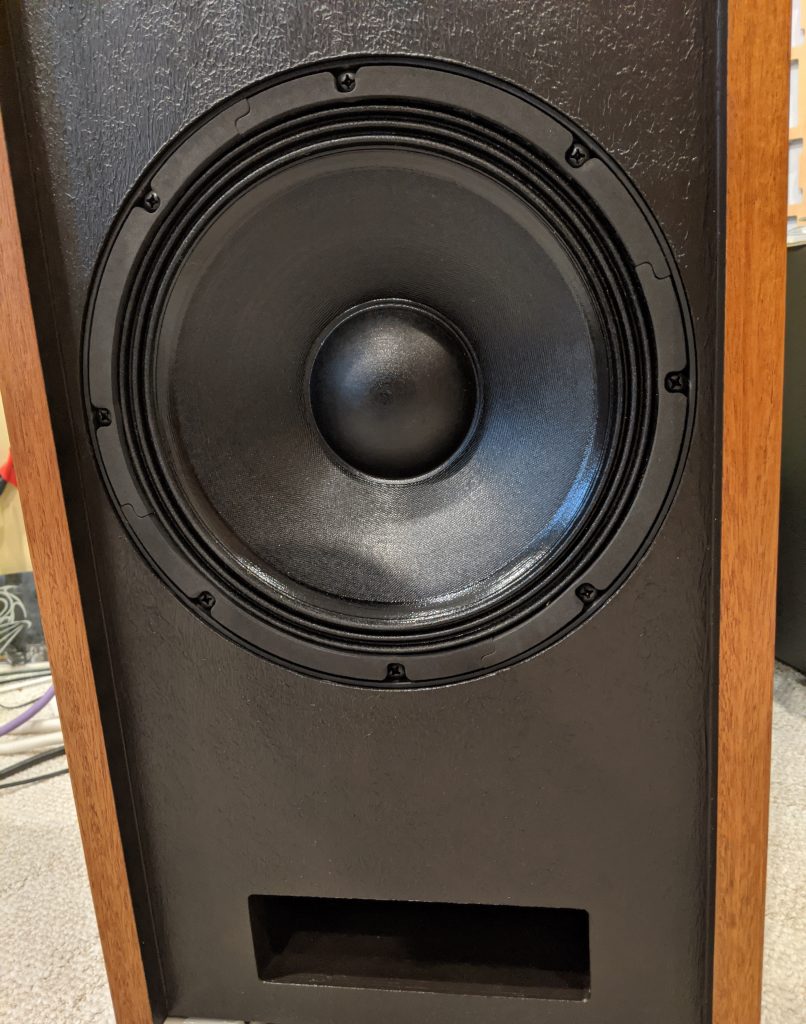
While the upper and lower octaves were very good, Razz loved the midrange, and to my ears, it was the driving force behind the sound of this loudspeaker. Rather than directional, or undesirably colored, I found the mid-horn to be articulate, and clear. The midrange balanced a sweet natural tone with very good resolution, and fast transient power.
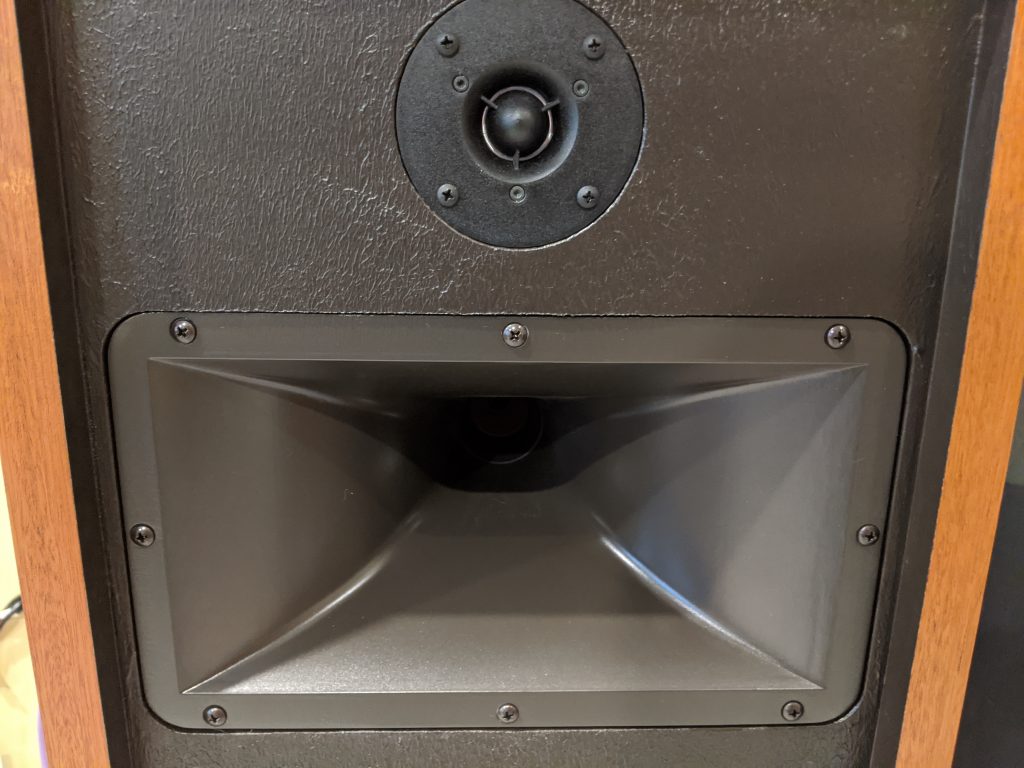
A very nice feature of the Razz is its crossover adjustability. If a cut or boost is required to dial in overall speaker balance, Razz crossovers have the option of adjusting the midrange and tweeter output levels by simply changing out resistors.
Greg Roberts musing on the Razz midrange horn:
"...I think it would surprise most people to learn how differently one midrange horn can sound from another simply due to the shape of the horn lens. I have various clips of music that I go to for these midrange tests—piano, vocal, acoustic guitar, etc… I'm listening for the proper weight of a piano note, how dynamic the pluck of a guitar string is, or how round the singer's head is. It took a while, but I finally found a great sounding mid horn for the Razz."
Big Razzy Tone
In the Tune Saloon, the tonal balance of the Razz was naturally warm rather than unwaveringly neutral. Midrange richness gave voices, and instruments texture, mass, and realism. Piano, as noted during a late night listen of "Home at Last" from Steely Dan's masterwork Aja, was particularly excellent. Supertramp's "From Now On" from Even in the Quietest Moments, shone a light on shimmering cymbals, and a brassy saxophone that was utterly gorgeous.
One attribute that Volti Audio strives to achieve is coherence. The Razz crossover points are around 500Hz and 5000Hz. Mr. Roberts told me he prefers using simple crossover filters in his designs because he finds the music sounds more natural. And indeed, the Razz does have a full-bodied "natural" sound. Driver integration is very good, and the speaker always played with a single seamless voice.
Greg Roberts on the impact of crossovers:
"The process of developing the crossovers happens at the same time I'm experimenting with port tuning, damping material placement/quantity, and bracing. There are so many combinations it is mind boggling sometimes, but this is where the sound of the speaker really takes shape."
Can You See Me Now?
I like a speaker that provides a little mind-altering enlightenment. The Volti does it with great imaging, and a convincing stage. Well defined forms, with excellent body, and correct size are easily pinpointed within the stage. Center image was concrete-solid, and most of the time, the speaker boxes simply didn't exist.
Staging was similarly excellent. In the 8'6" triangle set up, the Razz's perspective was mainly mid-hall or closer. Always recording dependent, the stage could be quite wide, with very good depth, yet without exaggerated height. When I moved the speakers into a nearfield set up, I was suddenly Bob Uecker, sittin' in the front row (sorry youngsters, old baseball beer commercial reference), and the stage was all encompassing. I loved the Razz up close, and personal, but no matter where the speakers were placed, there was an outstanding dimensional presence that made for memorable listening.
Razzle-Dazzle!
Whenever I get a new speaker, I play "Palladium" from Weather Report's Heavy Weather. It is a spectacularly revealing window into a speaker's potential. From the delicate tinks of striker on triangle, to the sensuous staccato of Jaco Pastorious' bass, it was highly impressive through the Razz. The startlingly dynamic opening is an especially tough full-stop to full-tilt test with the volume turned up. Well folks, I had it turned up pretty darn loud, and about sharted my shorts in the first five seconds. I wasn't prepared for the fluid slam, blazing speed, and ginormous stage. Razz dazzled its way through the entirety, showing off its ability to reproduce a clear window of transparency, and convincing tonality throughout the frequency spectrum.
Razz is smooth, effortless, punchy, and exciting. But they can also speak quietly, sweetly, voluptuously. The very antithesis of cold and clinical. The big 12" woofer is very fast, and teamed with the mid horn, is quite impressive on bass, drums, and percussive music. On Santana's Abraxas, the drum intro for "Hope You're Feeling Better" was fantastic. And I'd be remiss not to mention the congas, and timbales on "El Nicoya." Wonderful!
Rollin' one with Roon and Qobuz
Toward the end of my audition, I spent some time listening for personal enjoyment. No critical listening allowed. With tunes randomly selected by Roon Labs playback software, and content provided by my NAS library, or Qobuz's vast streaming collection; the now fully-flowered Razz was balanced, dynamic, and confidently musical.
One night I got a very nice Roon 'buz, and went full-tilt through the late 60s and early 70s rock parade. Song after song, Volti's tagline of "Have Fun!" was evident. A play of The Allman Brothers Band At Fillmore East (DSD version) made the evening...Razz was smokin', and I never once thought my life would be any better with another pair of speakers.
Saddle Up
My last sonic adventure was to get a sense of how well Razz handled complex recordings. To do so, I selected an audiophile darling: The DSD version of Tchaikovsky: 1812 Overture by Erich Kunzel & the Cincinnati Pops Orchestra. I'll admit this might not be the be-all-end-all of audiophile classics, but it is fun!
I pressed play on the "1812 Festival Overture, Op. 49", and turned it waaaaay up. While not immense, there was space, and a quiet nuanced delivery to the opening choral passages. Transparency, and tonality of all the instruments was very good; trumpets especially so. Massed strings were delicate, graceful, well-balanced, and clear. The latter choral parts were mesmerizing; bass drums, tympani, and cannon shots explosively impressive. There was an ebullient rhythmic air of heart pounding expectation to the ending; as imaginary ponies galloped, brass blared, and chimes sounded victory...I almost saluted.
Bravo!
The third cut on this fine recording; "Capriccio Italien, Op. 45," highlighted Razz's speed, micro-dynamic contrast, upper midrange, and treble performance. Gorgeous flutes, and piccolos trilled away. Wispy cymbal touches, and triangle taps were accented with just the right amount of twinkling brilliance. Breathless Metaphor Warning! Movements slow as a drop of molasses falling from the lip of a jar transmogrified to the crest of a crescendo with head snapping speed. (Whew! Sorry!) The dynamic performance in the closing minutes of this Tchaikovsky masterpiece may have been even more fabulous than the 1812 Overture.
(It took 18 years of writing about audio to work in the word transmogrified. Pretty damn proud. Yeah, I know big words. I think I even used it correctly?)
Finale
It is one thing to spotlight all the technical wonders of a high-end loudspeaker, and quite another to lose oneself for hours on end listening to it for the pure pleasure of doing so. In the last week of my review audition, Razz showed me its truest sonic intentions: forget the reviewer-speak, just play music!
Greg Roberts has succeeded in building a smaller, less expensive speaker for the Volti Audio product line. Razz does indeed carry the Volti sonic signature, and that is a very good thing. Audiophiles looking for a speaker in the $5k price range—especially those with small to medium sized rooms—should definitely investigate this lively, lovable, and livable, loudspeaker.
Razz Loudspeakers
Retail: $4999/pr
Available in four base wood veneers with black stretch grill cloth. Shipping not included. Premium veneers and cloth upgrades available. Check the website for more pricing information.
Volti Audio
6100 Nashville Highway
Baxter, TN 38544
207.314.1937 CST




